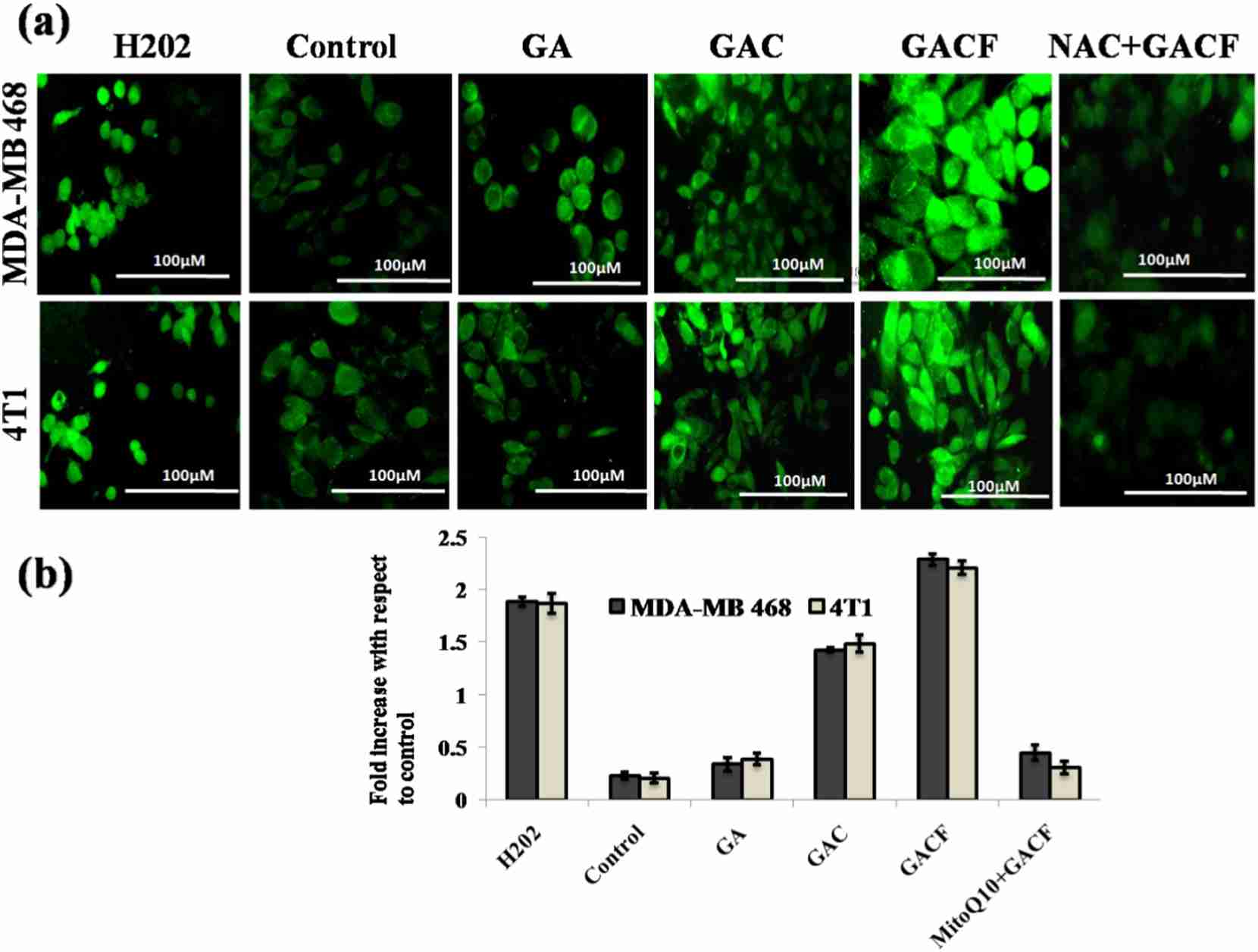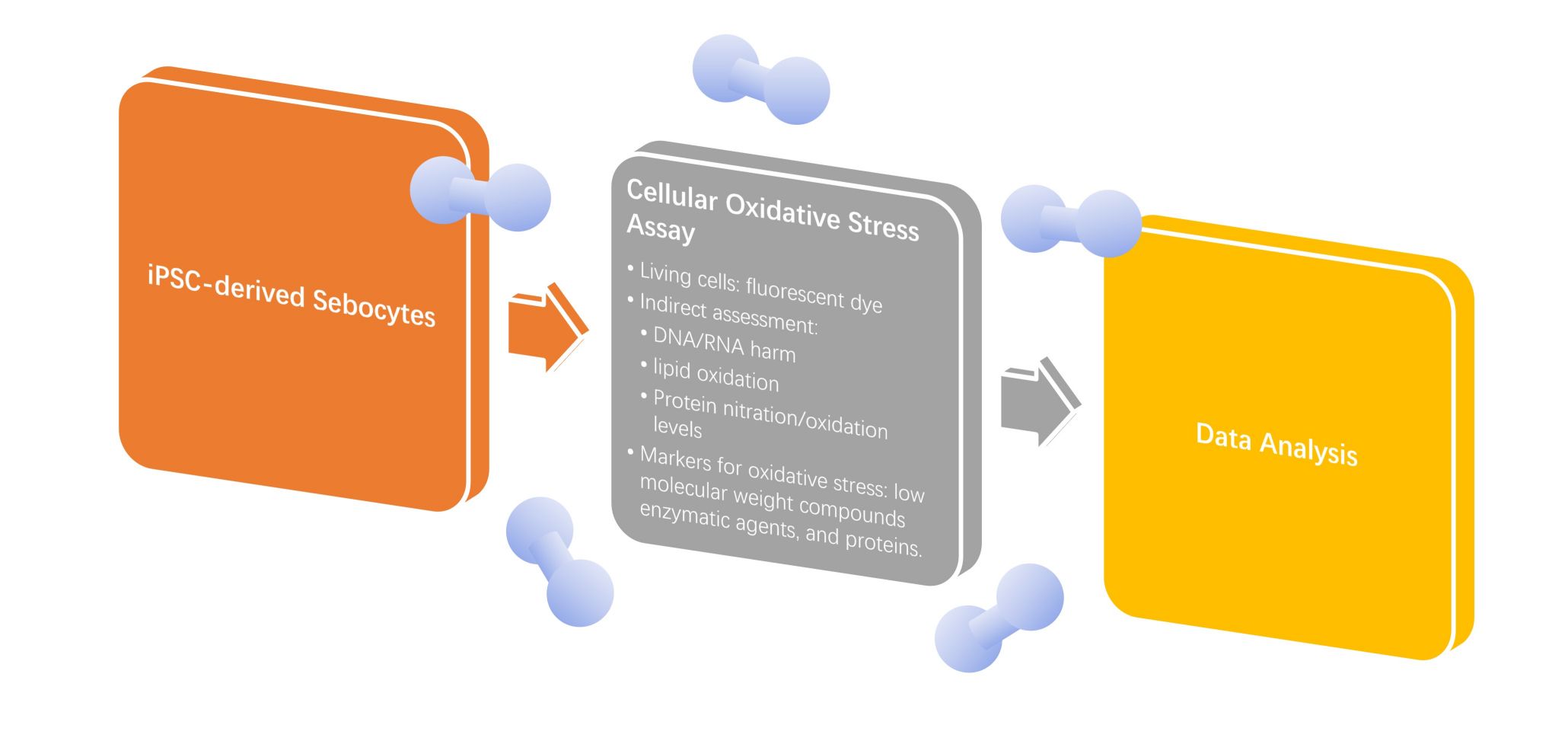Creative Biolabs offers a cellular oxidative stress assay to assess oxidative stress parameter levels in iPSC-derived sebocytes, facilitating the discovery process for acne and hyper/hyposeborrhea drugs.
Acne manifests as a dermatological condition characterized by obstructed hair follicles and chronic inflammation of the pilosebaceous follicles. The skin is continually subjected to oxidative damage caused by reactive oxygen species originating from both internal and external stimuli. Elevated reactive oxygen species production induces follicular wall irritation and degradation, potentially triggering progressive inflammatory responses in acne. Within the pilosebaceous unit, oxidative stress alters the environment, creating conditions conducive to the colonization of anaerobic bacteria. Sebum oxidation modifies the follicular oxygen levels, resulting in a microaerophilic milieu. Oxidative stress and inflammation initiate the pathogenic sequence leading to acne development.
Reactive oxygen species (ROS) refer to chemically reactive oxygen-containing species. They encompass peroxides, superoxide, hydroxyl radicals, singlet oxygen, and alpha-oxygen. Given their fleeting characteristics, quantifying ROS in live cells is feasible through fluorescent dye-based techniques, such as employing DCFDA.
 Fig. 1 Quantification of intracellular ROS using DCFDA assay.1
Fig. 1 Quantification of intracellular ROS using DCFDA assay.1
Indirect assessment of oxidative stress involves evaluating DNA/RNA harm, lipid oxidation, and protein nitration/oxidation levels, rather than directly measuring reactive oxygen species. These markers of oxidative stress exhibit greater persistence compared to reactive oxygen species. Antioxidant enzymes and various redox molecules neutralize ROS responsible for oxidative harm. Three categories of antioxidants serve as markers for oxidative stress: low molecular weight compounds, enzymatic agents, and proteins.

Creative Biolabs provides a comprehensive cellular oxidative stress assessment for our valued clients, enabling both direct and indirect evaluation of oxidative stress parameter levels in iPSC-derived sebocytes. This service aids in expediting the discovery process for efficient drugs in acne and hyper/hyposeborrhea.
To spearhead innovative paths in the realm of scientific inquiry into acne and hyperseborrhea, especially in the assessment and discovery of active pharmaceutical agents, Creative Biolabs unveils an advanced human sebocyte model derived from iPSCs. Renowned for their enhanced genomic stability, abundant availability, and exceptional inter-batch reproducibility, iPSC-derived cells emerge as a robust resource for investigating treatments for acne & hyper/hyposeborrhea. For further information or customized services, do not hesitate to contact us.
Reference
For Research Use Only. Not For Clinical Use.